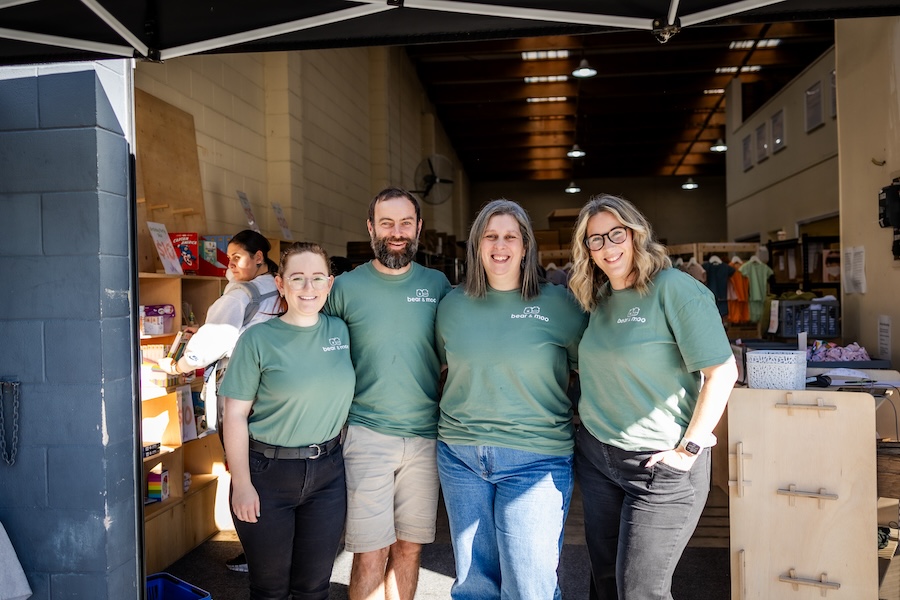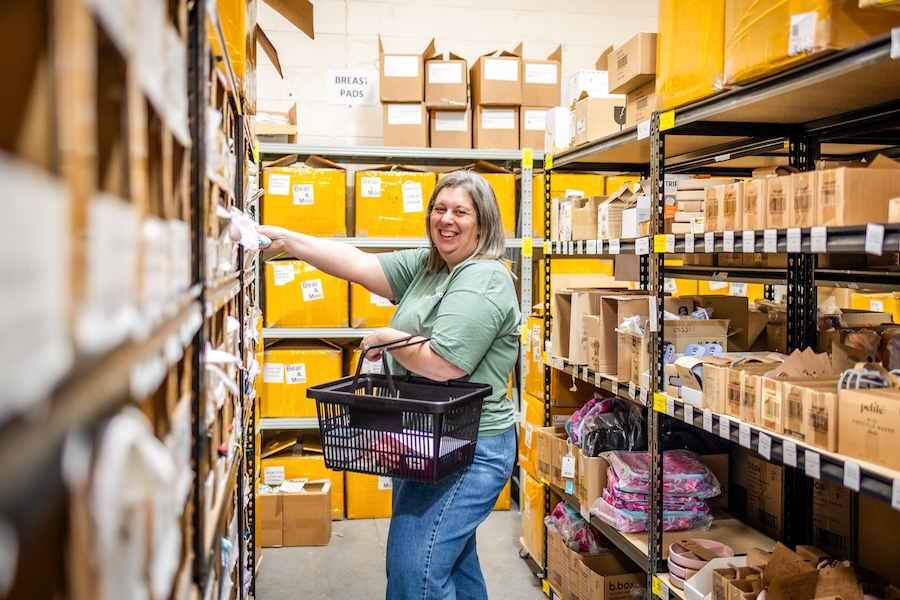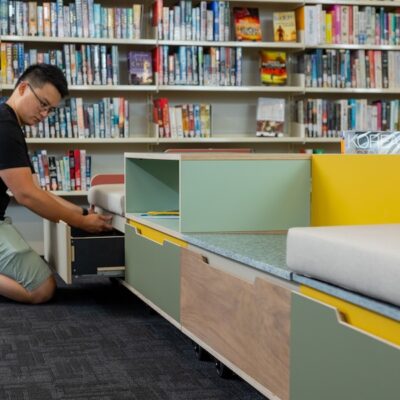Marketing that connects
Pictured above: Hannah Porter.
Since its inception in 2018, Bear & Moo has transformed from a humble, family-owned start-up selling cloth nappies into an established online retail store, offering a wide range of sustainable products for families. Much of this growth can be attributed the company’s sound marketing strategy.
Based in Hamilton, Bear & Moo began with a simple but powerful mission: to make reusable cloth nappies more accessible to families. As a stay-at-home mum of two (at the time), Hannah Porter had always been intrigued by e-commerce and the idea of growing a brand, but wasn’t sure what she would sell. “We used cloth nappies with our kids and I saw a gap in the market for something cost effective and also visually appealing – it felt like everything available was either expensive or not particularly cute, and so I took a leap and brought our own cloth nappies to the market.”
Hannah leveraged her education in communications and marketing to create a brand that resonated with other parents. “I took a risk purchasing 300 nappies with no business background, and firmly threw myself into the world of social media to create a brand and presence online to sell them,” she recalls. This decision marked the beginning of an extraordinary growth trajectory. “We now have a Facebook Group (Bear & Moo Crew) with about 5,000 members, and we create conversations and engagement in here.”
Bear & Moo has evolved significantly since its early days. The business now manufactures several brands: Bear & Moo which focuses on reusable and sustainable products such as cloth nappies, wet bags, reusable breast pads and more; Hello Poppet, quality kids clothing that lasts; and Launder & Love, cot sheets and bedding.
In addition to their own products, Bear & Moo curates a selection of both New Zealand and international brands, providing everything from books and toys to lunchboxes and lactation products. This diverse range has helped them build a large, loyal customer base and establish partnerships with retailers across NZ.
Hannah’s vision for Bear & Moo goes beyond just selling products; it’s about fostering a sustainable lifestyle. “The business has remained true to its roots as a sustainable brand that puts value ahead of overpriced trends,” she says. The company’s commitment to sustainability resonates with customers who are increasingly conscious of their environmental footprint. “We want to help families make choices that are not only good for their wallets but also for the planet.”
Marketing strategies that connect
A significant factor in Bear & Moo’s success has been Hannah’s innovative marketing strategies. Leveraging social media has allowed her to connect with customers on a personal level. “In the early days we got product into people’s hands to talk about – a very early micro influencer strategy of sorts. Instagram stories have always been a core of what we do – letting people get to know me and the behind the scenes of the business to encourage them to feel an affinity and loyalty to us and our brand. Now we have a multi-faceted approach, we invest in digital advertising across Meta, Google and TikTok, we send multiple eDMs a week utilising segmentation, we create video content that we share daily, we have a strong loyalty programme and an affiliate programme with over 300 customers as members,” Hannah explains. “They know my husband and kids, they know my house is a mess, and they know I’m someone they can come to with questions.”
This authenticity has fostered a strong community around Bear & Moo, resulting in a high rate of returning customers. Hannah’s relatability as a mother navigating the challenges of parenting has struck a chord with many. “We have a strong returning customer rate and are gaining new customers every day, partly due to our relatability,” she says.

When it comes to delivering an exceptional customer service, Hannah is motivated by the quote: ‘You can be the ripest, juiciest peach in the world and someone still won’t like peaches’. “You can’t please everyone, but I make it a priority to say yes more than I say no when it comes to customer service. Going above and beyond to make things work for a customer leads to good reviews and word of mouth which is priceless for a small business. Give someone a great experience and they’ll remember it and choose to come back to you. You won’t always get it right, and there will always be someone you just can’t please, but try to say yes more than no,” she advises.
Through the Crew Facebook Group and Instagram stories, Bear & Moo regularly polls their audience to get their opinion on new products, prints and ideas, and they run regular question boxes.
Hannah’s advice to other small business owners looking to excel at marketing and customer service is to be authentic with your customers.
“People buy from people, so it’s about letting them get to know you and the people behind the brand. For us, being in the baby and kids industry, a lot of what we sell can be purchased from multiple retailers, so it’s about giving people a reason to come back to us and keeping our brand top of mind – primarily through entertainment and education, but also showing up where they are, online.”
Hannah attributes much of Bear & Moo’s success to her dedicated team. With a warehouse now operational, she has built a fantastic group of individuals who work diligently and provide exceptional customer service. “Having a fabulous team who work to pack our orders promptly and offer epic customer service along the way is crucial.” This emphasis on teamwork not only boosts productivity but also enhances the overall customer experience, she says.
The David Awards 2024 winner
Category: Most Inspired Use of Marketing
Company: Bear & Moo
Judges’ comments: “Bear & Moo is a powerhouse in communicating, providing great service, and delivering fantastic results in developing their business and driving their marketing efforts.”
Finalists: Lauren Parsons Wellbeing; The Social Collective; Telescopicgoal
This article was originally published in the October 2024 issue of NZBusiness magazine. To read the issue, click here.






